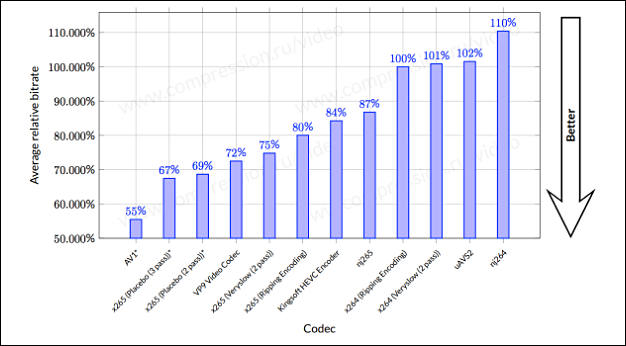
-

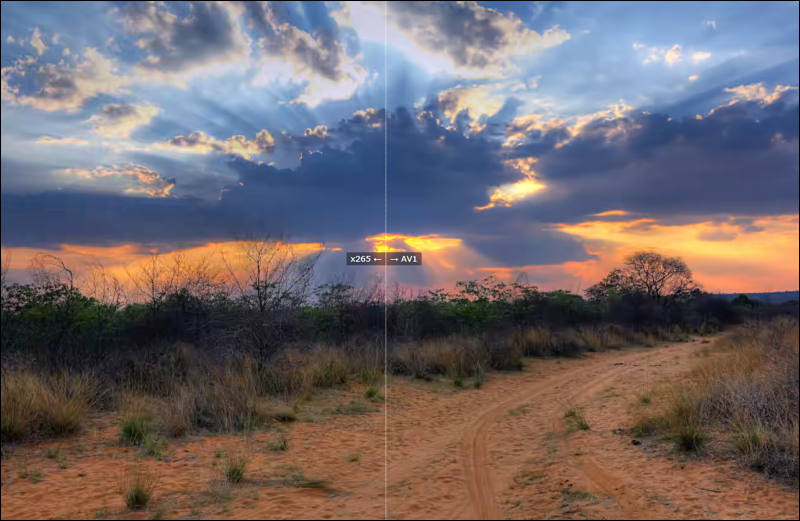
https://people.xiph.org/~tdaede/av1stilldemo/
Actual difference is tiny.
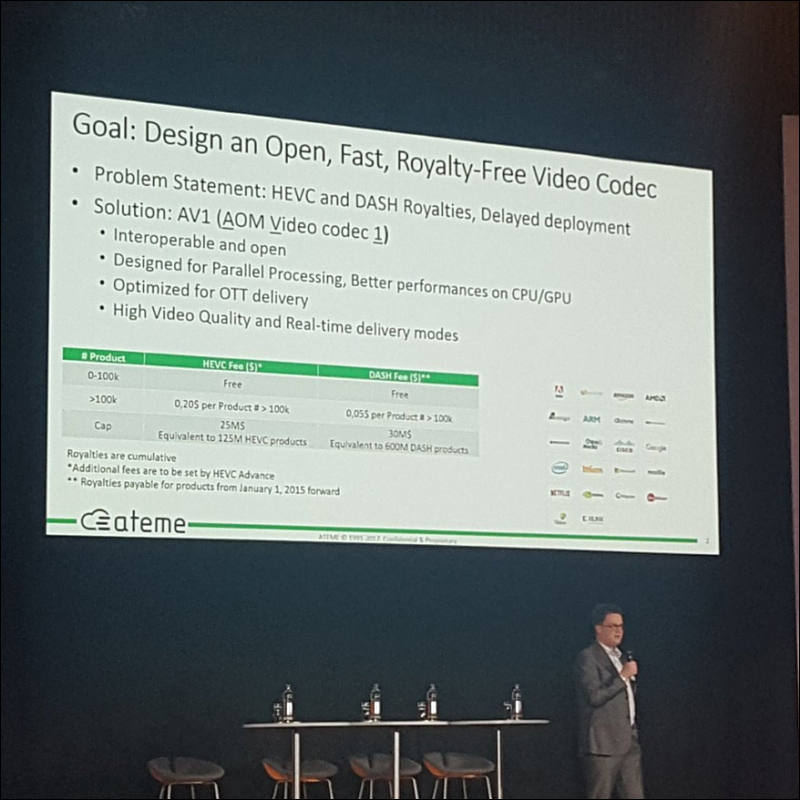
Also HEVC still images (<=8K res) decoding is actually present in hardware (by AMD, NVidia and Intel).
But reducing patent payment is goal number one here and end users damages are not important.
-
Native AV1 decoder fro Windows 10 released (beta for now)
Play AV1 videos on your Windows 10 device. This extension is an early beta version of the AV1 software decoder that lets you play videos that have been encoded using the AV1 video coding standard developed by the Alliance for Open Media. Since this is an early release, you might see some performance issues when playing AV1 videos. We’re continuing to improve this extension.
-
Mozilla to release in few days Firefox 65 with support of AV1.
Expect new huge impact on your battery life (non accelerated decoding is around 20-25x times less energy efficient at CPU level) as video provider try to avoid patent payments for HEVC and H.264.
-
Intel SVT-AV1
Intel’s new encoder, called Scalable Video Technology AOMedia Video 1 (SVT-AV1), aims to fill the role of a good CPU-based encoding software tool until dedicated AV1 encoders are ready for prime time. The encoder supports the Linux, macOS and Windows operating systems.
https://github.com/OpenVisualCloud/SVT-AV1
Another option is http://www.jbkempf.com/blog/post/2018/Introducing-dav1d
It is all very bad, as companies like to do another copy of a copy to not pay some patent fees.
Triumph of parasites.
-
Look at main users:
- YouTube
- Netflix has lot of plans
- Facebook also
- Twitch
What is common? It is companies who are delivery companies! For them it is not only less license payments that matter.
For them each saved percentage on file size cost tens of millions of dollars.For now AV1 encoders are much inferior for real usage, but for delivery companies it does not matter much. Some of them like Youtube just will be using custom hardware solutions, and Netflix also uses extreme high quality encoding to save as much on bitrate as they can.
-
On Firefox AV1 support and decoder improvements
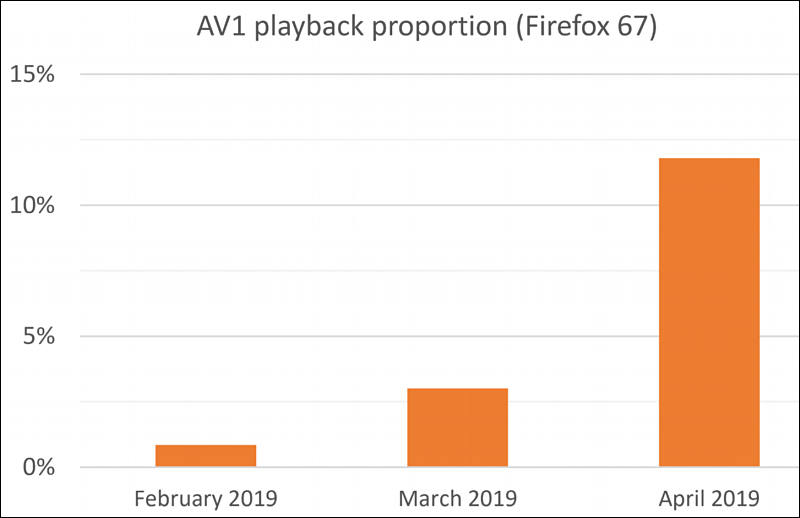
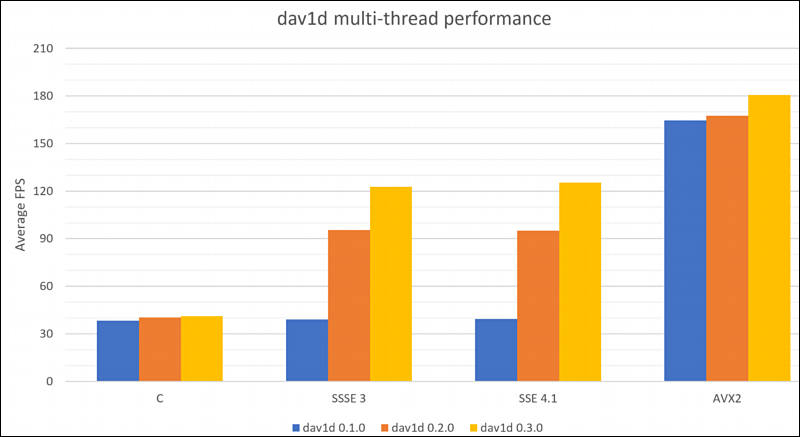

 sa8868.jpg800 x 518 - 33K
sa8868.jpg800 x 518 - 33K
 sa8869.jpg800 x 437 - 38K
sa8869.jpg800 x 437 - 38K -
Netflix started to use AV1 for some mobile Android users.
Only goal here is to maximally save on license payments. They don't care about anything else.
-
I tried watching YouTube videos on Google Chrome because Safari doesn’t support V9 but skin tones are cherry red, so went back to Safari 1080p. ????
-
Usually it is related to some computer stuff, so one browser uses different color correction compared to another.
-
AV1 progress
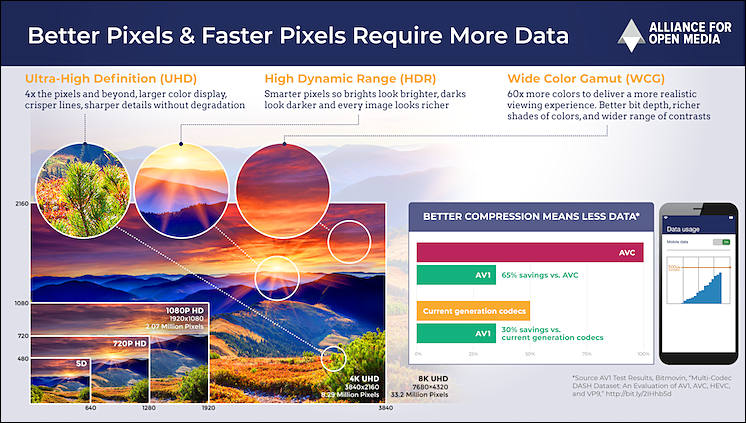
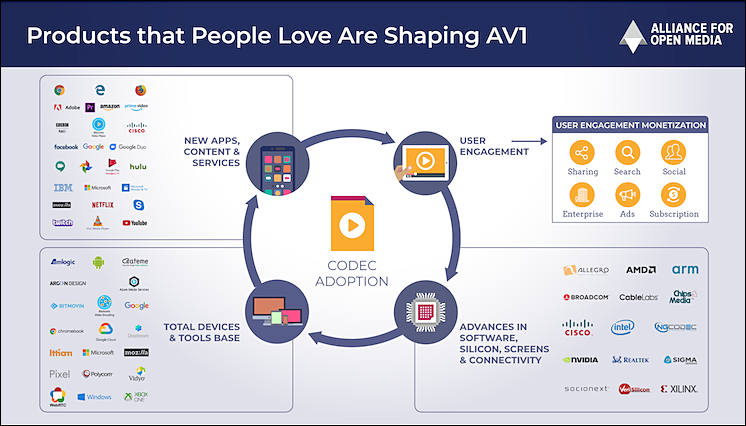
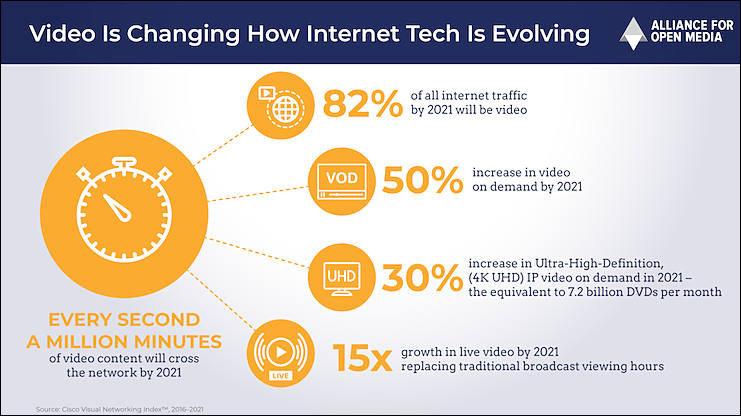
LSI with AV1 support:
- Amlogic S905X4, S908X, S805X2 support up to 8Kp60 (S905X4 support only up to 4Kp120 10bit, S805X2 only 1080p resolution)
- Broadcom BCM7218X support up to 4Kp60
- Realtek RTD1311 up to 4Kp60 and RTD2893 up to 8Kp60
- LG α9 3rd gen used in most 8K Tvs of 2020 lineup
- MediaTek Dimensity 1000

 sa12847.jpg746 x 423 - 91K
sa12847.jpg746 x 423 - 91K
 sa12848.jpg746 x 426 - 62K
sa12848.jpg746 x 426 - 62K
 sa12849.jpg741 x 416 - 62K
sa12849.jpg741 x 416 - 62K -
Mediatek solution with AV1
MediaTek has announced it will enable YouTube video streams using the cutting-edge AV1 video codec on the MediaTek Dimensity 1000 5G SoC. The MediaTek Dimensity 1000 is the world’s first smartphone SoC to integrate an AV1 hardware video decoder, enabling it to play back AV1 video streams up to 4K resolution at 60 fps. With its improved compression efficiency, AV1 gives users incredible visual quality and smoother video experiences, while using less data.
Video streaming is the number one activity in smartphone use, so by using the Dimensity 1000’s more power efficient hardware-based AV1 video decoder, users can enjoy longer battery life while still streaming at the best quality settings. Combined with its ultra-fast 5G connectivity in a single chip, the Dimensity 1000 leads the industry in design and capability.
“MediaTek is engaged in consistently upgrading its offerings to enhance user experience, and AV1 technology is a prime example. Video is now the most used form of communication, with 70% of Millennials and Gen Z reportedly using streaming services,” said Dr. Yenchi Lee, Assistant General Manager of MediaTek’s Wireless Business Unit. “Industry reports state that the video streaming market is likely to expand at a CAGR of 19.6% and touch $124.57 billion by 2025, and it is one of the principle drivers of 5G services. MediaTek is leading the way in enabling effective video streaming with AV1.”
The AV1 video codec is creating a landmark change in the video streaming industry. First released in 2018 by the Alliance for Open Media (AOMedia), AV1 is royalty-free, crafted to replace the VP9 codec and become the Internet Video Codec (NETVC) standard. AV1 is an ultra-high-performance video codec technology that delivers 30% more compression efficiency over existing VP9.
"AV1 has become an increasingly important format to allow high-resolution playback on handheld devices, and we're excited that MediaTek has implemented dedicated AV1 hardware to advance its adoption, such as what's included in their Dimensity 1000 5G SoC,” said Matt Frost, Director of Product Management of Google Chrome. “As mobile video streaming becomes more prevalent, new use cases like MediaTek's emphasize the important work of developing next-generation codecs."
-
Quite bad news
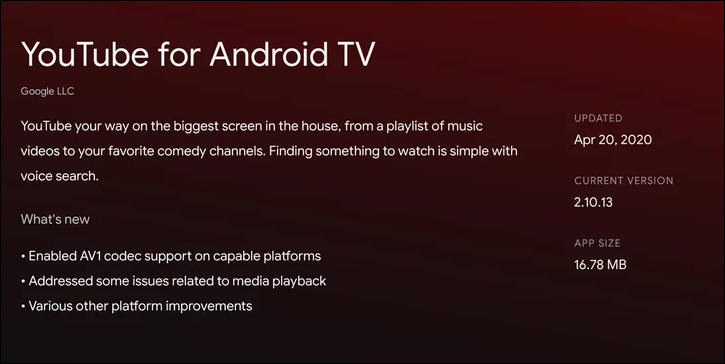
YouTube has started a migration to the new AV codec: some videos published on the streaming platform are now broadcast with the AV1 codec on some platforms using Android TV.
Idea of Youtube is to make problems to customers by reducing expenses for H,264 license payments.

 sa12954.jpg725 x 364 - 32K
sa12954.jpg725 x 364 - 32K -
Youtube already started using AV1 for some TVs like LG 75SM9900 Nanocell 8K
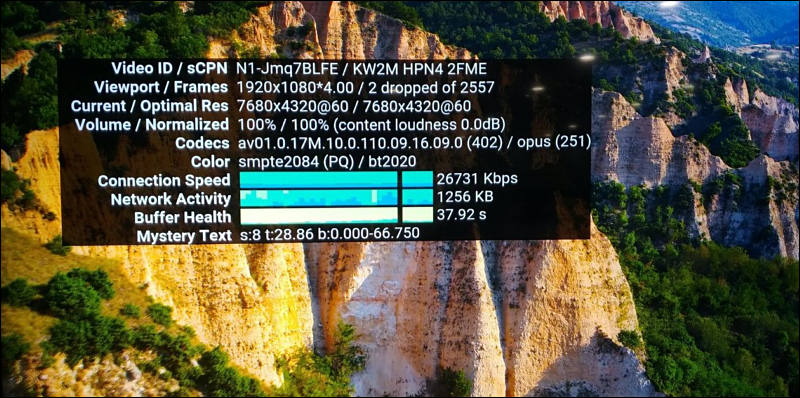

 sa13026.jpg800 x 398 - 101K
sa13026.jpg800 x 398 - 101K -
Bad news - new Nvidia cards got AV1 decoding, more mess on the market
GeForce RTX 30 Series GPUs: Ushering In A New Era of Video Content With AV1 Decode
Video is more than 60% of the world's internet traffic. And with the world going even more digital, finding efficient ways of transporting video is more important than ever.
Meanwhile, most of the online content available today still uses H.264, a codec developed nearly 20 years ago. Wit
Introducing AV1
The world’s top video and technology companies have united to prepare a new video standard — AV1. While the techniques used are a bit different from “middle-out compression” shown in HBO's Silicon Valley, the results are equally impressive (and real!) — AV1 is up to 50% more efficient than H.264. This means that you only need half the internet bandwidth to transmit the same quality. And AV1 also supports 10-bit encoding, so you can enjoy videos in HDR, too.
AV1 will deliver several new classes of experiences to users:
- For video-on-demand, AV1 makes 4K video streaming possible for users with limited internet connections, and unlocks 8K video streaming for the new wave of 8K TVs hitting the market.
- Today, many streamers play games at up to 1440p and 144 frames per second. However, platforms broadcast in 720p or 1080p and 60 frames per second. We’re working to bridge that gap, and give viewers the full experience that their favorite streamers enjoy — higher resolutions and frame rates.
Making AV1 Accessible To Everyone
Video providers are starting to ramp up AV1 content production. And our latest GeForce RTX 30 Series GPUs are ready to tackle up to 8K HDR streams with a new dedicated AV1 hardware decoder.
By enabling AV1 decoding at the hardware level, we’re working to propel the ecosystem forward and increase AV1 adoption - as more customers are able to consume AV1, more companies will be encouraged to generate AV1 content.
In addition to adding AV1 decode support with our new GeForce RTX 30 Series GPUs, we’re collaborating with the ecosystem to make GPU-accelerated AV1 video a reality:
- Microsoft is adding hardware acceleration capabilities to the AV1 Video Extension, so Windows 10 users can enjoy better performance and higher resolutions.
- Google has updated Chrome on Windows 10 to support AV1 hardware decoding, and is making more AV1 content available on YouTube, making it easier than ever to watch 8K videos with dedicated AV1 hardware support.
- We are working with Twitch on the next generation of game streaming. AV1 will enable Twitch viewers to watch at up to 1440p 120 FPS at 8mbps; a feasible bitrate that can reach most home-broadband and 5G users. VideoLAN is enabling VLC, a top open source video player, to decode AV1 content using GeForce RTX 30 Series GPUs, making it faster and requiring less power.
- AV1 is set to drive the next leap in internet-based video. It’s a bright future for the billions of hours of content consumed every day.
-
notify me when they implement h.266 filesizes into AV1. It's still the same huge size as h.265. (35% difference)
-
Have no idea that you mean. If you expect some huge efficiency jump - it won't happen.
-
i mean same relative quality for smaller bitrate=smaller size. I'm waiting on the open-source H.266 equivalent.
-
Will be supporter by Tiger Lake CPUs
Support for the high-performance AV1 CODEC that enables power-efficient support for 4K, even in constrained bandwidth environments.
https://www.personal-view.com/talks/discussion/23793/intel-tiger-lake-cpus
-
AV1 decoding will be supported by
- Intel CPus with Intel Iris Xe GPU
- NVIDIA GeForce RTX 3xxx GPUs
- AMD Radeon RX 6xxx GPUs
You will need latest Windows 10 build and also Microsoft Codec.
Netflix, Google via Youtube and Microsoft are pushing this shit like mad.
And it is all for around $0.01 (usually much less) more profits for each playback.
Even more interesting is that all mess with HEVC is made bye exactly same companies, but issue is that some of other companies formed by their ex managers want money.
In reality AV1 encoder is usually 15-20% worse than best x265 encoder. And you won't get any hardware assisted good encoder anytime soon.
-
Want to prize Qualcomm
Snapdragon 888 won't not support hardware video decoding in the latest AV1 format developed by Google, Netflix and other tech giants. So all top next-generation smartphones will not be able use it and it is big plus.
We really do not need all this mess with video codecs.
-
The first preview of Android 12 brings support for the AV1 Image File Format (AVIF), which has better image quality for the same file size when compared with image formats such as JPEG.
AVIF is an image file format that uses AV1 compression (the open, royalty-free video coding format designed for video transmissions on the Web) stored in HEIF containers.
“AVIF is a container format for images and sequences of images encoded using AV1,” Android VP of Engineering Dave Burke writes. “Like other modern image formats, AVIF takes advantage of the intra-frame encoded content from video compression.”
All is going into wrong direction.
Now HEIF containers can have many different formats and all of them with some corporate restrictions (yes, despite claims for AV1 also!), so this guys any time can decide that they will get money from each viewing or saving your file.
-
LG Electronics has formally joined The Alliance for Open Media (AOMedia), on the “Promoter” level for the open AV1 codec that is building momentum as an alternative to HEVC H.265.
According to AOMedia, LG joined its ranks at the Promoter level, lining up with previous heavy weight supporters including Amazon, Apple, Google, Microsoft, Netflix and Samsung .
Howdy, Stranger!
It looks like you're new here. If you want to get involved, click one of these buttons!
Categories
- Topics List23,981
- Blog5,725
- General and News1,354
- Hacks and Patches1,153
- ↳ Top Settings33
- ↳ Beginners255
- ↳ Archives402
- ↳ Hacks News and Development56
- Cameras2,362
- ↳ Panasonic991
- ↳ Canon118
- ↳ Sony156
- ↳ Nikon96
- ↳ Pentax and Samsung70
- ↳ Olympus and Fujifilm100
- ↳ Compacts and Camcorders300
- ↳ Smartphones for video97
- ↳ Pro Video Cameras191
- ↳ BlackMagic and other raw cameras116
- Skill1,961
- ↳ Business and distribution66
- ↳ Preparation, scripts and legal38
- ↳ Art149
- ↳ Import, Convert, Exporting291
- ↳ Editors191
- ↳ Effects and stunts115
- ↳ Color grading197
- ↳ Sound and Music280
- ↳ Lighting96
- ↳ Software and storage tips267
- Gear5,414
- ↳ Filters, Adapters, Matte boxes344
- ↳ Lenses1,579
- ↳ Follow focus and gears93
- ↳ Sound498
- ↳ Lighting gear314
- ↳ Camera movement230
- ↳ Gimbals and copters302
- ↳ Rigs and related stuff272
- ↳ Power solutions83
- ↳ Monitors and viewfinders339
- ↳ Tripods and fluid heads139
- ↳ Storage286
- ↳ Computers and studio gear560
- ↳ VR and 3D248
- Showcase1,859
- Marketplace2,834
- Offtopic1,319


